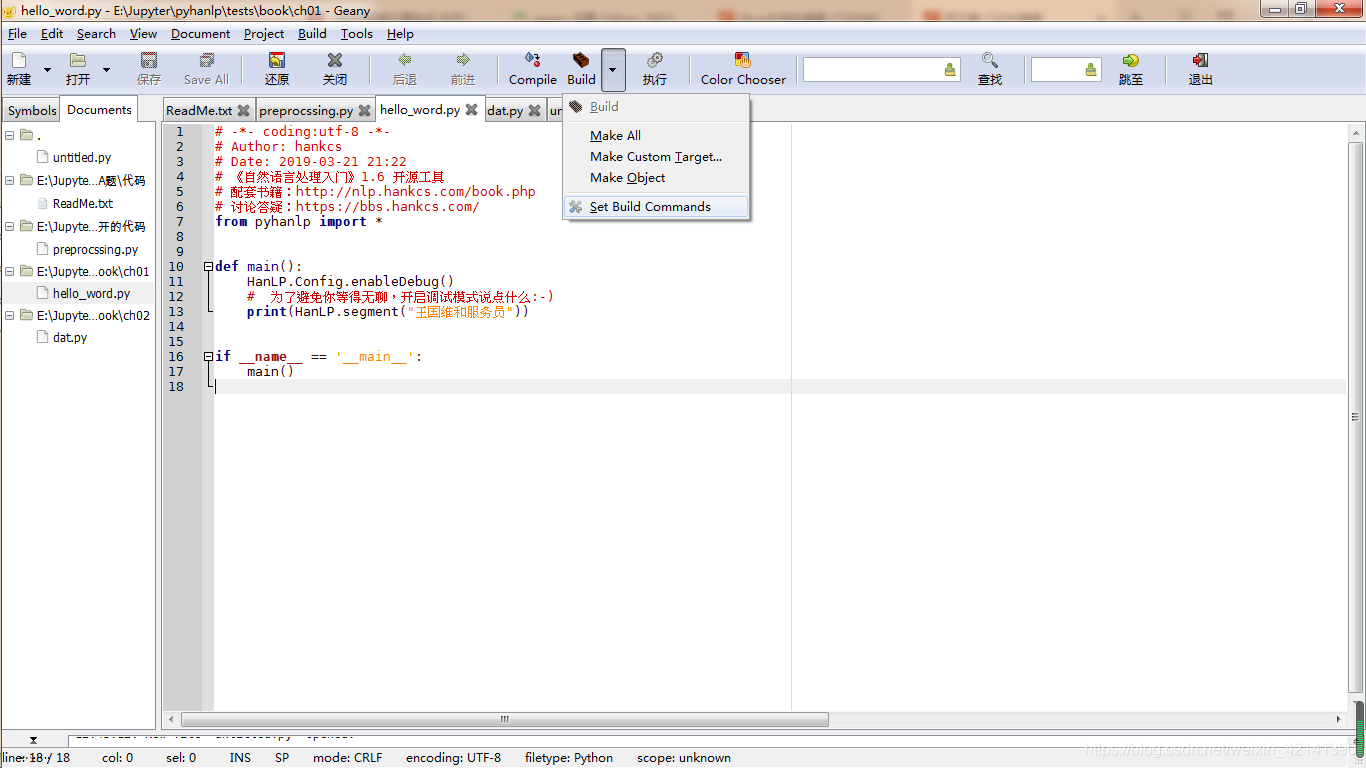Geany 配置 Python
本文共 222 字,大约阅读时间需要 1 分钟。
我的电脑里有两个 Python,一个是平常的 Python,是在 Python 官网上下载的;另一个是在 MiniConda 上带来的。
平时用的是平常的 Python,但有一天想改成 miniconda 的 python,此时就要修改一下了:
首先: Build -> Set Build Conmmands

然后修改 Compile 和 Execute,将 -m 前和 “%f” 前 的 py 改成你想配置的 Python.exe 的路径:

转载地址:http://eqsg.baihongyu.com/
你可能感兴趣的文章
new一个对象的过程
查看>>
new对象时,JVM内部究竟藏了什么小秘密?
查看>>
Next.js React Server Components 教程
查看>>
NextGen Mirth Connect XStream反序列化远程代码执行漏洞(CVE-2023-43208)
查看>>
next项目部署到服务器pm2进程守护
查看>>
nexus 介绍
查看>>
nexus上传jar
查看>>
Nexus指南中的更新强调集成和透明度的重要性
查看>>
Nexus指南已经发布
查看>>
Nexus(1):Nexus的安装与配置
查看>>
NFinal学习笔记 02—NFinalBuild
查看>>
NFS
查看>>
nfs mount 故障 mount.nfs: access denied by server while mounting 10.0.100.208:/backup_usb
查看>>
NFS Server及Client配置与挂载详解
查看>>
NFS 服务配置篇
查看>>
NFS共享文件系统搭建
查看>>
nfs复习
查看>>
NFS安装配置
查看>>
NFS服务器配置-服务启动与停止
查看>>
NFS的安装以及windows/linux挂载linux网络文件系统NFS
查看>>